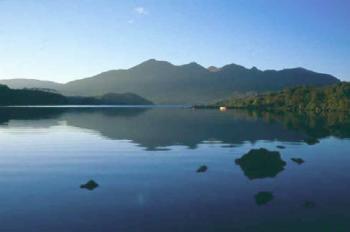 | Caithness.Org | Community | Business | Entertainment | Caithness... | Tourist Info | Site Map |
• Advertising • Chat Room • Contact Us • Kids Links • Links • Messageboard • News - Local & Scottish • News - UK & News Links • About / Contact Us • Submissions |
• Bookshop • Business Index & News • Jobs • Property For Sale • Property For Rent • Shop • Sutherland Business Index |
• Fishing • Fun Stuff • George, The Saga • Horses • Local Galas • Music • Pub Guide • Sport Index • What's On In Caithness |
• General Information • B & Bs • Backpackers • Caravan & Camping • Ferries • Getting Here • Holiday Letting • Hotels • Orkney • Pentland Firth • Sutherland • Taxis |
| N E W S F E E D S >>> |
The Sutherland
Biodiversity Action Plan - October 2003
BIODIVERSITY AUDIT - RIVER
LOCH AND WETLAND
|
RIVER, LOCH & WETLAND
Rivers & lochs The biodiversity of Sutherland lochs and pools is heavily dependent on their chemistry, which in turn is dependent on the surrounding rocks, soils and distance from the sea. The peatland lochs are acidic and nutrient poor (oligotrophic). Bogbean and sphagnum mosses are characteristic, with unique species of desmids occurring in many of the lochs.
Lochs of intermediate (mesotrophic) nutrient levels have a broad range of species utilising their environment. Insect life is diverse and brown trout, char and eels thrive in such locations. The limestone lochs of Durness are high in nutrients (eutrophic) and support rare pondweeds. Similarly, lochs situated on machair, where reworked shells form sand and gravel of the loch bottom, are rich in aquatic life. Common gulls prefer freshwater lochs during the breeding season, where they gather in colonies of varying size. |
These clean waters are vital for sustaining important populations of Atlantic salmon, sea trout, brown trout, char and freshwater pearl mussel. Water voles, now lost from much of the British Isles, still occur on headwater burns in the West. Daubenton’s bats can be seen at dusk feeding over bodies of open water such as slow flowing rivers and lochs.
Sutherland’s peatland and hill lochs provide particularly important nesting habitats for red and black throated divers and common scoters, whilst the larger lochs such as Loch Loyal are important breeding and moulting sites for waterfowl including Sutherland’s resident population of greylag geese. Wetlands A diverse and colourful range of aquatic plants is found in these open water and wetland habitats. The wetlands are carpeted with an array of flowers including marsh marigold, ragged robin, northern marsh orchid and water avens. Numbers of amphibians are declining further south, which makes Sutherland an increasingly important area for frogs, toads and newts. |











